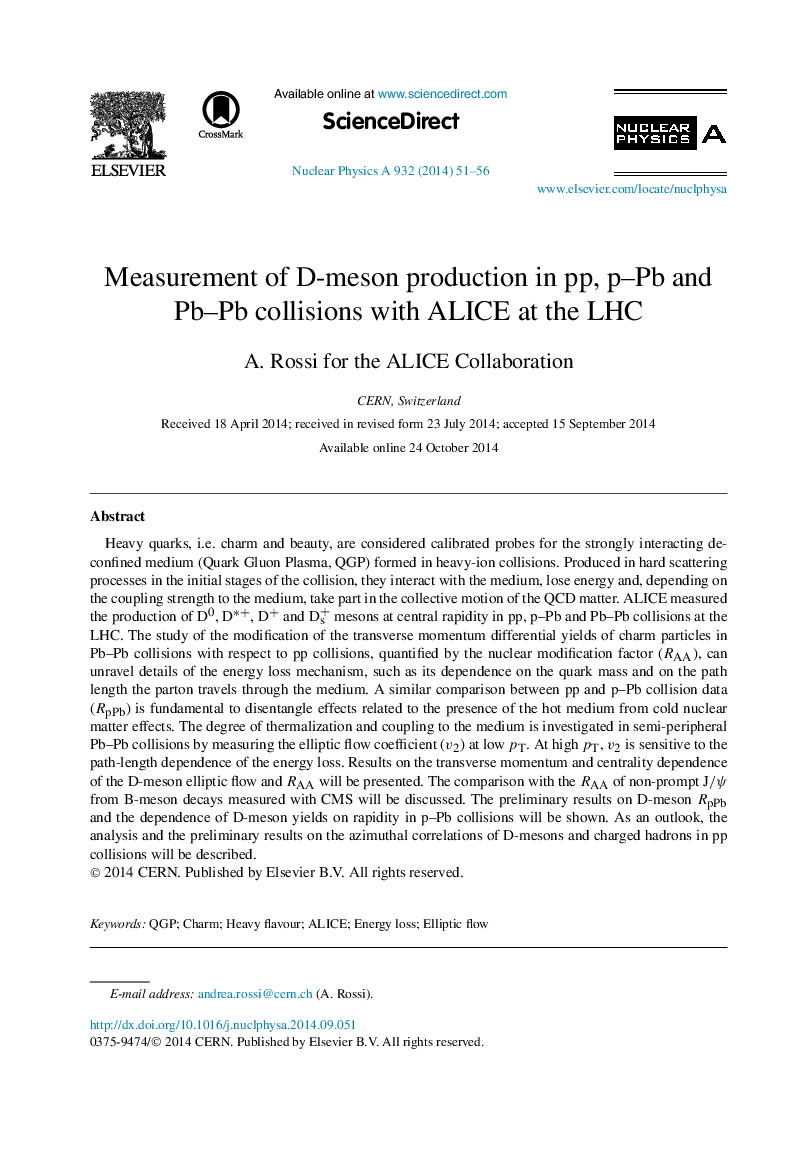| Article ID | Journal | Published Year | Pages | File Type |
|---|---|---|---|---|
| 1835777 | Nuclear Physics A | 2014 | 6 Pages |
Heavy quarks, i.e. charm and beauty, are considered calibrated probes for the strongly interacting deconfined medium (Quark Gluon Plasma, QGP) formed in heavy-ion collisions. Produced in hard scattering processes in the initial stages of the collision, they interact with the medium, lose energy and, depending on the coupling strength to the medium, take part in the collective motion of the QCD matter. ALICE measured the production of D0D0, D⁎+D⁎+, D+D+ and Ds+ mesons at central rapidity in pp, p–Pb and Pb–Pb collisions at the LHC. The study of the modification of the transverse momentum differential yields of charm particles in Pb–Pb collisions with respect to pp collisions, quantified by the nuclear modification factor (RAARAA), can unravel details of the energy loss mechanism, such as its dependence on the quark mass and on the path length the parton travels through the medium. A similar comparison between pp and p–Pb collision data (RpPbRpPb) is fundamental to disentangle effects related to the presence of the hot medium from cold nuclear matter effects. The degree of thermalization and coupling to the medium is investigated in semi-peripheral Pb–Pb collisions by measuring the elliptic flow coefficient (v2v2) at low pTpT. At high pTpT, v2v2 is sensitive to the path-length dependence of the energy loss. Results on the transverse momentum and centrality dependence of the D-meson elliptic flow and RAARAA will be presented. The comparison with the RAARAA of non-prompt J/ψJ/ψ from B-meson decays measured with CMS will be discussed. The preliminary results on D-meson RpPbRpPb and the dependence of D-meson yields on rapidity in p–Pb collisions will be shown. As an outlook, the analysis and the preliminary results on the azimuthal correlations of D-mesons and charged hadrons in pp collisions will be described.
